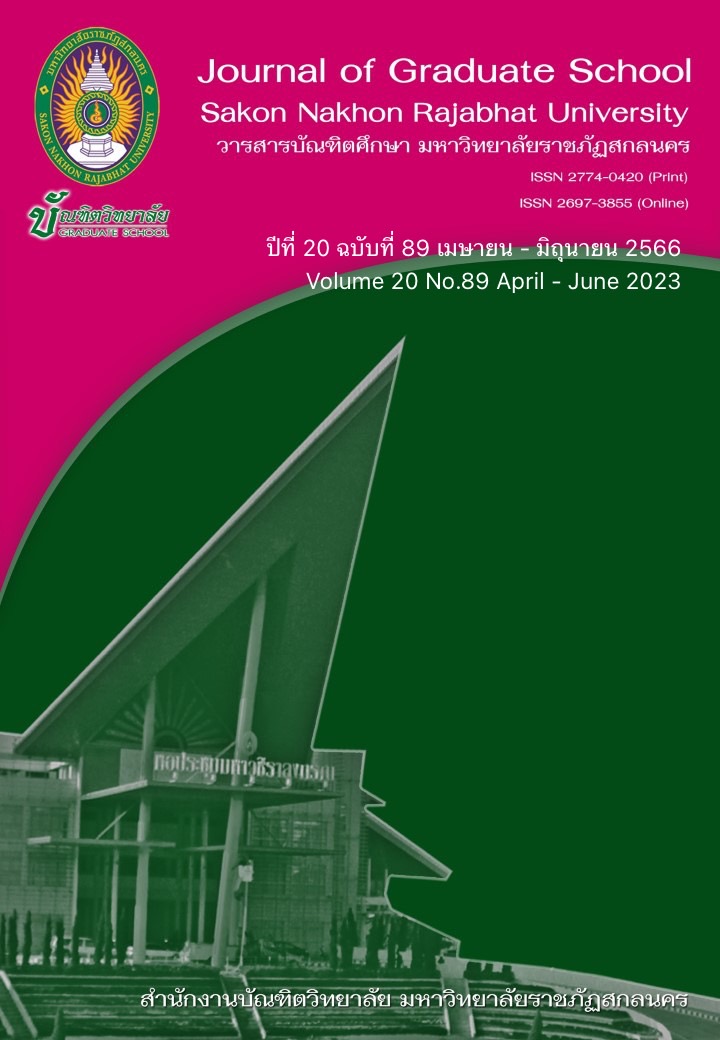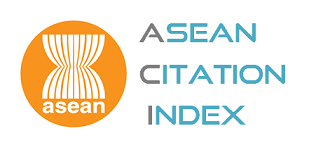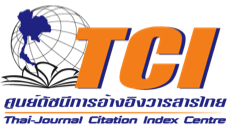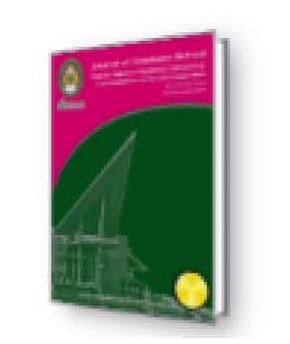การพัฒนาความสามารถทางภาษาอังกฤษด้วยการจัดการเรียนรู้เชิงรุกร่วมกับการสอน เน้นการใช้ภาษาเพื่อการสื่อสาร รูปแบบไฮบริดภายใต้สถานการณ์ COVID-19 สำหรับนักเรียนชั้นมัธยมศึกษาปีที่ 4
Keywords:
Active Learning, Communicative Language Teaching, Hybrid LearningAbstract
The purposes of this research were: 1) to develop active learning instruction integrated with communicative language teaching in a hybrid learning to improve the English ability of Mathayomsuksa 4 students, and 2) to examine the students’development in English after learning through active learning instruction integrated with communicative language teaching in a hybrid learning. The research was conducted according to the principles of action research of Kemmis and McTaggart (1988, p. 10), consisting of a four-step PAOR cycle process, namely, step 1-plan, step 2-act, step 3-observe, and step 4- reflect. The samples, obtained through purposive sampling, consisted of 40 Mathayomsuksa 4 students from 4/3 class in the second semester of the academic year 2021 at Wat Nongkhaem School under Bangkok Secondary Educational Service Area Office 1. The research instruments were: 1) nine lesson plans on What We Wear, and 2) a test of English language ability. Statistics for data collection included mean, standard deviation, percentage, t-test for Dependent Samples, and relative gain scores.
The findings were as follows:
1. The pre-test mean of students’ English language ability was 10.65, whereas the post-test mean was 14.28 out of 20 points with the relative gain score of 40.94, indicating that the English language ability of the students after the intervention was higher than that of the pre-intervention at the .05 level of significance.
2. The students’ English language ability after the second and third cycles significantly improved and could be summarized as follows: one student with a very high level of English language ability (2.50 percent), 11 students with a high level of English language ability (27.50 percent), 20 students with a medium level of English language ability (50 percent), three students with a basic level of English language ability (7.50 percent), and five students showed no improvement of English language ability.
References
กมล โพธิเย็น. (2564). Active Learning: การจัดการเรียนรู้ที่ตอบโจทย์การจัดการศึกษาในศตวรรษที่ 21. วารสารศึกษาศาสตร์ มหาวิทยาลัยศิลปากร, 19(1), 11-28.
กิตติพันธ์ วิบุลศิลป์. (2560). ผลการจัดกิจกรรมการเรียนรู้คณิตศาสตร์ตามแนวคิดห้องเรียนกลับทางร่วมกับการเรียนรู้เชิงรุกที่มีต่อความสามารถในการแก้ปัญหาคณิตศาสตร์และความสามารถในการคิดอย่างมีวิจารณญาณของนักเรียนมัธยมศึกษาปีที่ 5. วิทยานิพนธ์ ค.ม. กรุงเทพฯ: จุฬาลงกรณ์มหาวิทยาลัย.
คัมภีรภาพ คงสำรวย และคณะ. (2564). การใช้เครื่องมือออนไลน์สําหรับการเรียนการสอนภาษาอังกฤษในสถานการณ์การแพร่ระบาดของโรคอุบัติใหม่ : และโรคอุบัติซ้ำ : กระบวนทัศน์และการประยุกต์ใช้. วารสารมหาวิทยาลัยมหามกุฏราชวิทยาลัย วิทยาเขตร้อยเอ็ด, 10(2), 923-937.
ชัยวัฒน์ สุภัควรกุล สุทธิพงศ์ หกสุวรรณ และนิคม ชมพูหลง. (2560). การพัฒนาระบบการเรียนการสอนแบบไฮบริด สําหรับนักศึกษาระดับปริญญาตรี มหาวิทยาลัยราชภัฏ. วารสารการวัดผลการศึกษา มหาวิทยาลัยสารคาม, 23(1), 66-67.
ณัฐวดี ธาตุดี. (2562). การพัฒนาความสามารถด้านการอ่านอย่างมีวิจารณญาณของนักเรียนชั้นมัธยมศึกษาปีที่ 3 โดยการจัดกิจกรรมการเรียนรู้เชิงรุก (Active Learning). วารสารศึกษาศาสตร์ มหาวิทยาลัยศิลปากร, 17(2), 129-142.
ทัศนีย์ ชาวปากน้ำ. (2557). การพัฒนาแบบฝึกทักษะการอ่านภาษาอังกฤษตามแนวการสอนอ่านเพื่อการสื่อสารโดยใช้ข้อมูลท้องถิ่นจังหวัดนครปฐม สำหรับนักเรียนชั้นมัธยมศึกษาปีที่ 4. วารสารศิลปากรศึกษาศาสตร์วิจัย, 6(1), 117-128.
บุญชม ศรีสะอาด. (2553). การวิจัยเบื้องต้น. กรุงเทพฯ: สุวีริยสาสน์.
พรประภา ชัยนา. (2564). การพัฒนาความสามารถในการอ่านเชิงรุกและความพึงพอใจของนักเรียนชั้นมัธยมศึกษาปีที่ 6 ตามแนวคิดการจัดการเรียนรู้แบบบูรณาการเนื้อหาและภาษา. วารสารศิลปากรศึกษาศาสตร์วิจัย, 13(1), 336-352.
วิจิตรา ศิริวงศ์ และประสิทธิ์ สระทอง. (2562). การวิจัยเชิงปฏิบัติการในชั้นเรียน Classroom Action Research. วารสารสิรินธรปริทรรศน์, 20(2), 199-213.
ศิริชัย กาญจนวาสี. (2557). การคำนวณคะแนนพัฒนาการ (Gain Score). สารสมาคมวิจัย สังคมศาสตร์แห่งประเทศไทย. 1(1), 1-20.
ศิวาพัชญ์ บำรุงเศรษฐพงษ์ และคณะ. (2563). การเรียนการสอนแบบไฮบริด (Hybrid Learning) กับการพัฒนาคุณภาพการศึกษาไทย ในศตวรรษที่ 21. วารสารนาคบุตรปริทรรศน์ มหาวิทยาลัยราชภัฏนครศรีธรรมราช, 12(3), 213-224.
สำนักงานเลขาธิการสภาการศึกษา. (2560). แผนการศึกษาแห่งชาติ พ.ศ. 2460-2579. กรุงเทพฯ: บริษัท พริกหวานกราฟฟิค จำกัด.
สํานักงานวิชาการและมาตรฐานการศึกษา. (2551). หลักสูตรแกนกลางการศึกษาขั้นพื้นฐาน พุทธศักราช 2551. กรุงเทพฯ: กระทรวงศึกษาธิการ.
Canale, M., & Swain, M. (1980). Theoretical bases of communicative approaches to second language teaching and testing. Applied Linguistics, 1(1), 1-47.
Fluckinger, J. et al. (2010). Formative feedback: Involving students as partners in assessment to enhance learning. College Teaching, 58(4), 136–140.
Graham, C.R. (2012). Introduction to Blended Learning. Retrieved from http://www.media.wiley.com/product_data/except/86/C.pdf. November 27th, 2021.
Kemmis, S., & McTaggart, R. (1988). The Action Research Planner. (3rded). Victoria: Deakin University.
Sherman, S. J., & Sherman, B. S. (2004). Science and Science Teaching. Westport: Greenwood Press.
Stanford Teaching Commons. (2022). Course Design Overview. Retrieved from https://teachingcommons.stanford.edu. February 16th, 2022.
Downloads
Published
How to Cite
Issue
Section
License
Copyright (c) 2023 Journal of Graduate School Sakon Nakhon Rajabhat University

This work is licensed under a Creative Commons Attribution-NonCommercial-NoDerivatives 4.0 International License.
บทความทุกบทความที่ตีพิมพ์ในวารสารบัณฑิตศึกษา มหาวิทยาลัยราชภัฏสกลนคร ถือว่าเป็นลิขสิทธิ์ของบัณฑิตวิทยาลัย มหาวิทยาลัยราชภัฏสกลนคร










